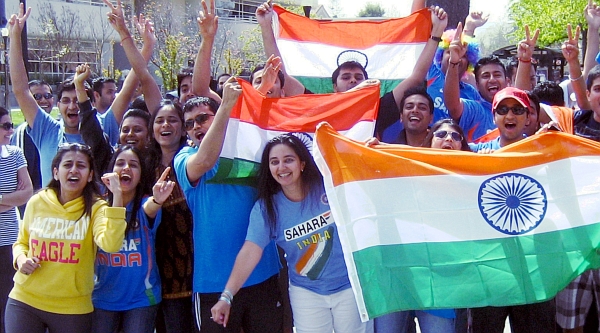One of the fastest-growing ethnic minorities in the US in recent decades has also been one of the most successful: Indian Americans. Now more than 3 million strong, Indian Americans are the third largest cohort of Asian Americans in the US.(1)
With the vast majority of Indian Americans born outside of the US, the Indian-American population is still made up primarily of immigrants-and most of these immigrated within the last 25 years. Unlike many immigrant groups, who tend to settle in enclaves on either the East or West coast, however, Indian-Americans are dispersed throughout the country.
While still a relatively small contingent, accounting for just about 1% of the US population, Indian Americans have quickly become disproportionately influential in such fields as digital technology, science, engineering, medicine, and academia. Better educated and better off financially than any other immigrant group, Indian Americans have become the richest and most successful ethnic cohort in the US.

image: JeffBedford (Flickr)
Taking Charge
By 2014, nine Fortune 500 companies had Indian American CEOs.(2) Prominent Indian American business leaders include Indra Nooyi, CEO of PepsiCo (pictured right); Satya Nadella, CEO of Microsoft; Ajay Banga, head of MasterCard; Ravichandra Saligram, CEO of OfficeMax; and Shantanu Narayen, CEO of Adobe Systems.
Well Off
Because such a high percentage of Indian Americans work in high paying professions, they have the highest income among all immigrant and ethnic groups in the US–and a higher income than most Americans. In 2010, the median annual personal earnings of full-time Indian-American workers was $65,000, compared to $40,000 among all US full-time workers. At a household level, Indian-Americans had a median annual household income of $88,000 in 2010–33% higher than that of all Asian Americans and 77% higher than the median income of US households as a whole ($49,800).(3)
Life in America
The vast majority of Indian Americans have come to the US just within the last generation in order to find better opportunities. Most have in fact found a better life in the US, and are satisfied overall with their lives and their new home.
A 2012 poll conducted by the Pew Research Center found that more than seven of 10 Indian-American immigrants came to the US seeking greater opportunities–reasons cited by just under half of Asian Americans overall. Specifically, Indian Americans cited the following reasons for their migration:
- Educational opportunity: 37%, compared to 28% of all Asian Americans
- Economic opportunity: 34%, nearly twice the share of all Asian Americans (21%)
- Family reasons, including family reunification: 18%, a far smaller share than all Asian Americans (31%)
- Escape persecution: 2%, far fewer than the Asian-American average of 9%
- Some other reason: 9%
Family Comes First
Family is of supreme importance to most Indian Americans. Nearly four of five (78%), for example, say that being a good parent is one of the most important things in their lives. That’s a significantly higher share than among either Asian Americans (67%) or the overall US population (50%). And 64%-nearly twice the overall US rate of 34% (and also more than the 54% of all Asian Americans)–say that having a successful marriage is very important.
REFERENCES
1 “Indian-Americans Form 3rd Largest Asian Population in US,” India Times, April 24, 2014, http://articles.economictimes.indiatimes.com.
2 Palash Ghosh, “The Rise of Indian-Americans in US Business,” International Business Times, March 10, 2014, http://www.ibtimes.com.
3 “The Rise of Asian Americans,” Pew Research Center, April 4, 2013, http://www.pewsocialtrends.org.
Future in Focus recently published two reports devoted to the influential, prosperous, and rapidly growing Indian American population, exploring the demographics of this community in the US, as well as examining Indian American opinions on the US, on family and work life, on their relationships with other groups, and on politics. For more information on these reports, email us.


